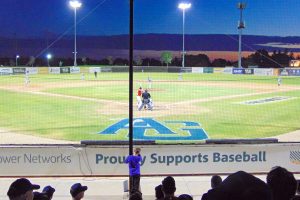ANZAC is a word that more than any other stirs our memories of courage, of sacrifice, of compassion and comradeship, of a quality that in the whole history of human conflict has rarely been equalled. ANZAC is more than a name – it is a legend. The ANZAC spirit is the Australian spirit; the spirit that founded a nation, opened it up by daring exploration, developed it and protected it. (Sir William Keys, 1986)
Nan Bosler shares the story of two Australians; great men who she is proud to have known and who represent the true spirit of the ANZAC.
Albert Edward Matthews, known as Ted, was the last ANZAC from New South Wales. He was born at Leichardt on 11 November 1896. Ted was only 17 when he enlisted in the First World War. He served at Gallipoli as a signaller with the 1st Division Signals for the entire nine months of the campaign and later in France with the 4th Division Signals.
Just after the landing at Gallipoli on 25 April 1915 Ted Matthews was hit in the chest by a pellet of shrapnel but survived thanks to a notebook he carried in his pocket; the thick book had been a present from his mother. He went on after Gallipoli to the Western Front, participating in the remarkable feat of arms achieved by Australian forces at Villers-Bretonneux. After the war he worked in the building trade as a carpenter and married Stella Broderick. They had two daughters who both married American GIs during World War II and travelled to the USA to live.
When Ted tried to enlist in World War II he was rejected because, at 43, he was ‘too old’. Tragically, his wife Stella died of pneumonia and he went on to marry Freda Corlette with whom he made frequent trips to the USA to visit his daughters and their families. After Freda died Ted moved to the USA and lived with his daughter, Irene, for 17 years. He then decided he wanted to return to Australia and moved into the ‘War Vets’. He was selected to join the pilgrimage group to Gallipoli for the 75th Anniversary of the landing at Anzac Cove. Ted Matthews died in his sleep on 9 December 1997 at the RSL Veterans’ Retirement Village, Narrabeen.
“He was an exceptional man. He was an ordinary man.”
– Kevin Matthews, on his uncle Ted Matthews
He was 101 years old. A State Funeral Service with full military honours was held in St Stephen’s Uniting Church, Sydney, on 16 December 1997.
 When delivery the eulogy, his nephew Kevin Matthews described Ted as “… the second of six children and brought up in a strict Methodist home; those principles stayed throughout his life. He was an exceptional man. He was an ordinary man.
When delivery the eulogy, his nephew Kevin Matthews described Ted as “… the second of six children and brought up in a strict Methodist home; those principles stayed throughout his life. He was an exceptional man. He was an ordinary man.
“He was a very unassuming, straightforward and honest person who was never afraid to speak his mind … He was fiercely Australian and deplored the actions of those who erode those freedoms. We are indebted to him and thousands of others like him…” Ted was always prepared to say what he thought and often spoke of the futility of wars. He considered Anzac Day “…not for old diggers to remember, it’s for survivors to warn the young about the dangers of romanticising war”.
GALLIPOLI 1915 & 1985 – JACK TARRANT
John George Tarrant, known fondly as Jack, had never been military minded as a lad but when war broke out and two of his brothers Dick and Harry enlisted immediately Jack was determined to also “do his duty”. He enlisted on 15th March 1915 and arrived at Gallipoli on 22nd August. While he was not among the first to arrive, he was one of the last to leave Gallipoli.
Jack was a bomber. One of the first things he had seen when he arrived at Gallipoli was “the factory” which produced the bombs. These bombs were made mainly with jam and milk tins – a circle was cut out of the top and the tin filled with bits of metal, stones, whatever could be found; explosives were added and a string wick, the top was soldered closed. There were a lot of casualties among the bomb throwers and it was soon apparent that the most vulnerable were the right handed bombers. To throw right handed they had to fully expose themselves to raise up and throw, when the fuse was lit the Turks could see the sparks; a left handed bomber was a little more protected. Jack was a right hander but he practised to improve his ability with his left hand with good results.

Jack shared what he remembered about the eventual decision to evacuate Gallipoli. He recalled:
“My mate Martin and I were the last two out of Walker’s Ridge on the night of the evacuation. We were checked four times between Walker’s Ridge and the barge taking us from the beach. “Days before the evacuation I had been down to the beach a couple of times carrying bombs and things. “I was almost slaughtered there; it was hard work and so steep. The mules could barely climb the grade. “They had been used to bring up ammunitions and things, in the finish they had to make steps for the mules. “Anyhow, when I was down there I saw this tape; on the tape was printed “every man should know this tape”. “It stretched from the beach right up to where we were. “It was a long way and took at least two hours to get there. “The tape was two to three inches wide, it had white lettering on a black background.
We were forbidden to talk about the evacuation in case our voices carried and the Turks heard it. “It wasn’t until after the evacuation that the incredible planning and brilliance of the strategy really sunk in. “We lost thousands getting onto Gallipoli and coming off we didn’t lose one.”
Jack Tarrant served in France until the end of the war and was awarded the Distinguished Conduct Medal for valour at Mont St Quentin in France on 31 August 1918. He was wounded several times, on one occasion he was badly hit in the leg and the bone would not set properly and had to be overlapped and the knee wired. After a spell he was back in the thick of it. He arrived back in Australia in November 1919.
Jumping forward 69 years, when there were less than 200 members of the Gallipoli Legion of ANZACS of NSW, Jack’s mate Charles Bingham suggested to the Prime Minister of the time, Bob Hawke that the name of Gallipoli should be changed to Anzac Cove!
On Anzac Day 1984 Jack and Charles went to the Anzac Day March in Sydney and then were driven to Canberra by Dot Bingham to meet with the Turkish Consul General. The Consul General was very much in favour of the name change and also suggested that his Government would be happy to make it a very special occasion. In April 1985 Jack and Charles left Australia as members of the official Australian party to travel to Turkey to take part in the ceremonial renaming of Gallipoli to Anzac Cove. It was the 70th anniversary of the landing.
When asked about his return visit Jack said he hadn’t recognised very much of Gallipoli as he had arrived and left in the dark and had lived underground in the trenches.
He then said: “Instead of going here to kill we went to extend the hand of friendship. It made me very happy.”
LEST WE FORGET
About
Nan Bosler, OAM
Nan Bosler lives near the War Vets village and has spent many hours talking with war veterans and learning their history. She was honoured in 1984 to receive an ANZAC of the Year Award, presented by Air Marshal Sir James Rowland KBE KFC AFC KStJ, former Governor of NSW who led the Australia Remembers March in 1995.























Add Comment